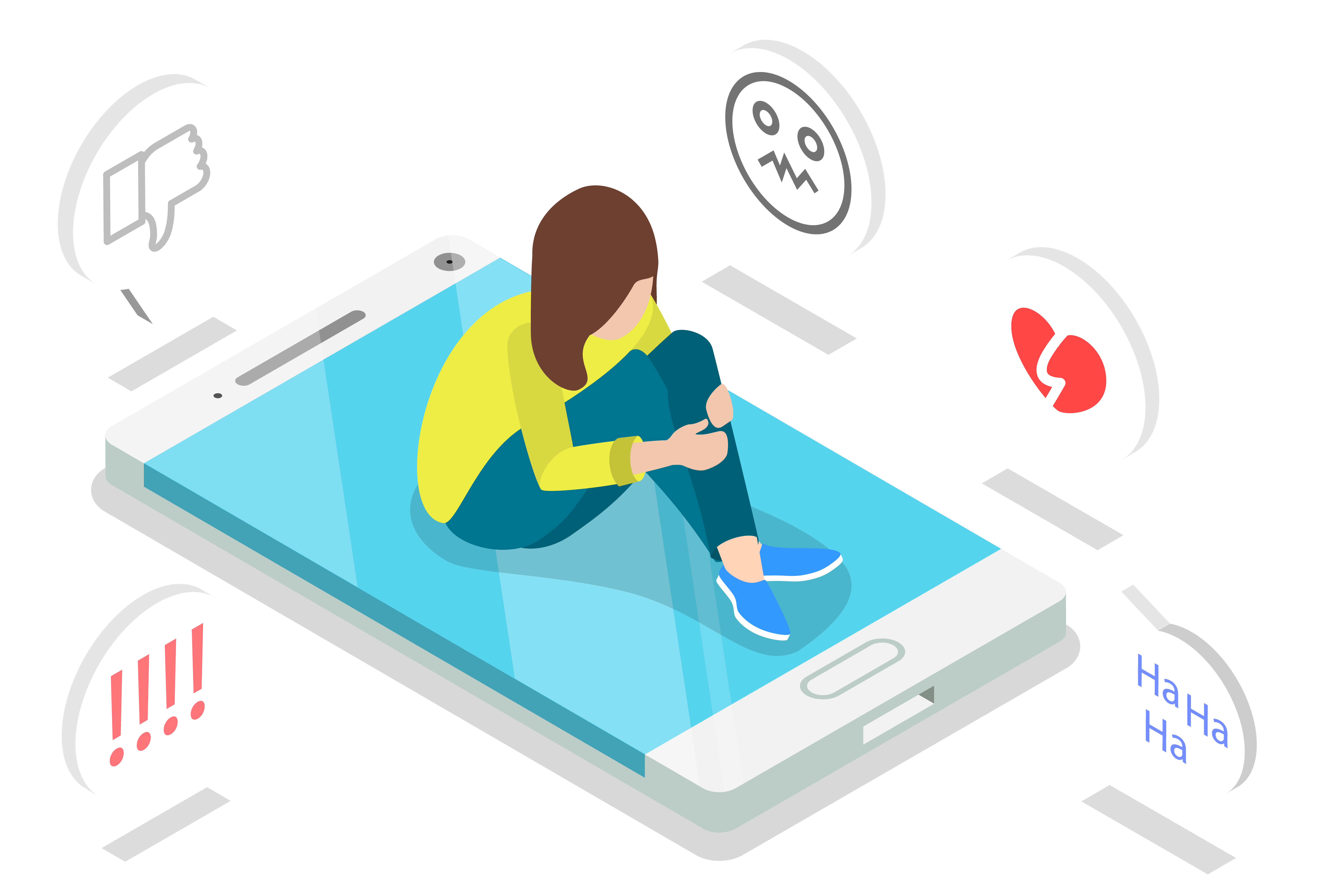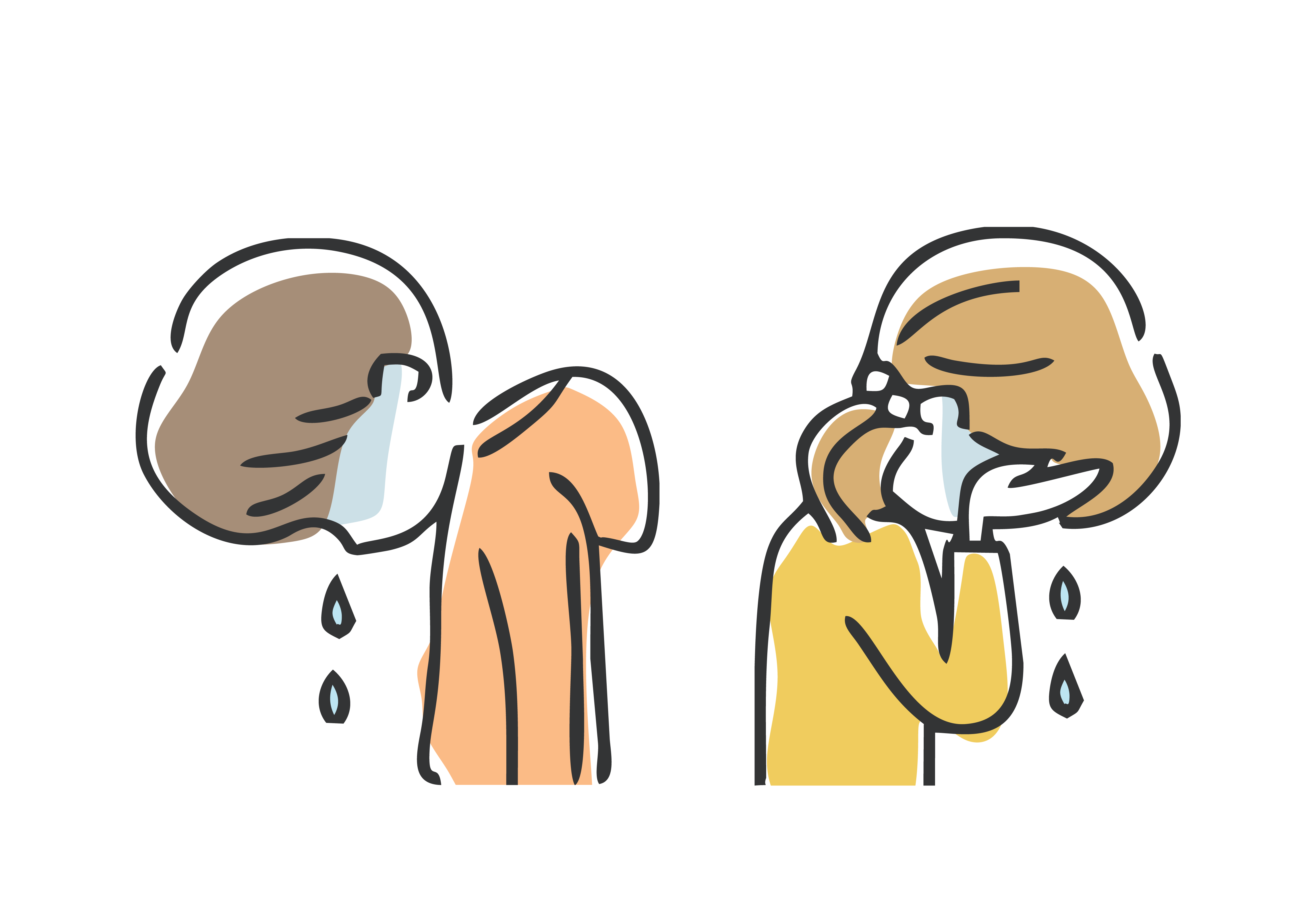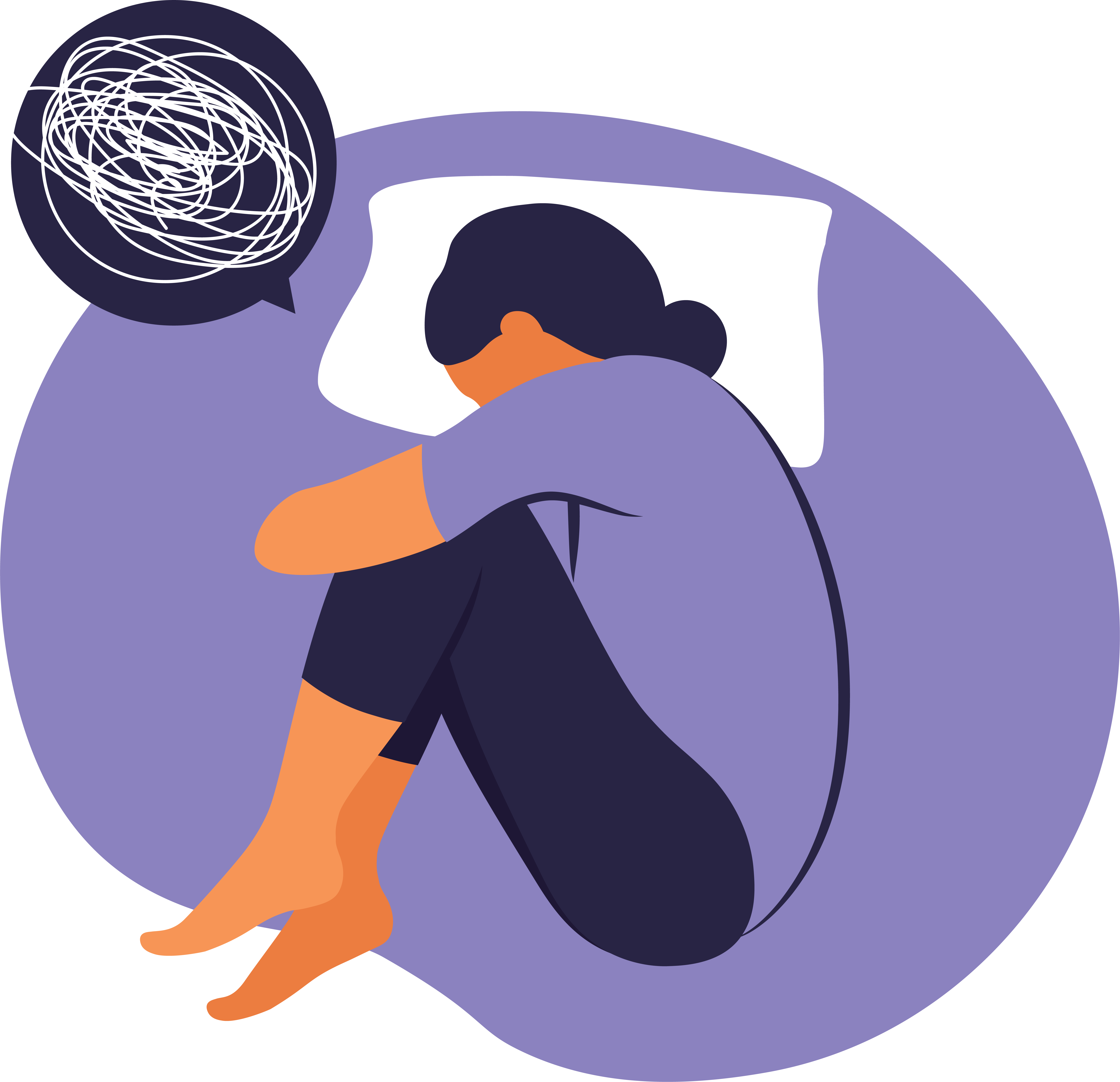The way children use smartphones and Social Media has negative effects on their health and well-being.
It is important for parents to be aware of these negative effects.

Attention Deficit
Smartphones deploy sophisticated techniques to draw in and captivate our attention; the apps and mobile content hosted on these devices are similarly designed to monetise our attention.
Children are especially susceptible to ‘distraction by design’ technology, and it appears that its effects are not fleeting or temporary, but have a permanent effect on their abilities to focus and remain concentrated on real-life activities – schoolwork, friends, family, real-world play.
Multiple studies have identified evidence of comorbidities between excessive smartphone use and psychiatric diagnoses including ADHD and OCD.


ADDICTION AND DEPENDENCY
The convenience of accessible real-time images, information, games and other content comes at a high price – especially for children. Using colours, sounds and vibrations smartphones, and many of the apps that run on them, are specifically designed not only to hold our attention but to encourage regular repetitive viewing.
According to former Google designer Tristan Harris, features such as “pull to refresh” were inspired by slot machines and casino games; and these features have been weaponised by social media platforms. Many aspects of the device have been designed to create fanatical users.
Children, the most vulnerable of users, seek out validation and dopamine hits through social media approval. Even a 2016 report by Common Sense Media found that 50% of American teens “feel addicted” to mobile devices and 59% of parents believe their kids are addicted to their devices. The same survey also found that 78% of teens check their devices at least hourly.
More recently, a Pew Research report from 2018 found that 95% of American teenagers have smartphone access and 45% use the Internet “almost constantly”.
A 2019 King’s College London study found that in the UK, an estimated one in four children and young people use their smartphones in a way that is consistent with a behavioural addiction.


ANXIETY AND DEPRESSION
Studies have found that excessive smartphone use among young people has been associated with difficulties in cognitive-emotion regulation, impulsivity, impaired cognitive function, addiction to social networking, shyness, depression, loneliness, stress, social anxiety. Parents may feel they are cushioning their children by keeping them safe at home and indeed teens are physically safer, they are less likely to get into a car accident or drink alcohol but psychologically they are vulnerable.
Rates of teen depression and suicide have skyrocketed in the past decade such that we are now experiencing a global teen mental health crisis.
Meanwhile mental health researchers in the US have observed that symptoms of depression, suicide risk factors and suicide rates among teens increased sharply in 2012, coinciding with the acceleration of smartphone ownership particularly among those younger generations. It has been customary for commentators to point out that correlation does not prove causation, but Jonathan Haidt, a leading expert in the field, contends that as evidence of harm mounts, this position is becoming harder to defend. He writes, “There is now a great deal of evidence that social media is a substantial cause, not just a tiny correlate, of depression and anxiety, and therefore of behaviors related to depression and anxiety, including self-harm and suicide.”


SOCIAL ISOLATION AND LONELINESS
The almost ubiquitous presence of smartphones in social, family, leisure, retail and business settings is changing the way children understand the social world, and their confidence and ability to interact in person with friends, family and community, with potentially severe impacts on long-term personal and professional life prospects still to be measured.
A study of 1,500 parents of children aged six to 16 found that 70% are desperate to get their youngsters outside more, while 63% find it hard to get their child off their devices and into the great outdoors.
Around 12% of boys in the UK were believed to be addicted to playing video games in 2020. Smartphones are by design single-user devices, and so encourage solo activity at the expense of social interaction. Despite the omnipresence of social media and instant messaging,children are feeling lonelier than ever, with a third of teens now reporting loneliness at school, up from a tenth in the year 2000.


IMPAIRED
ACADEMIC ATTAINMENT
Research suggests that smartphone use during studying has a negative impact on learning and academic achievement, and the greater the use the greater the impact. Researchers from the London School of Economics discovered that the performance of pupils at schools which had banned smartphone use experienced the equivalent of an extra week of education over an academic year.
The Department for Education has produced guidance for schools concerning the use of
smartphones and mobile phones. The guidance offers options for schools from a complete ban to
phones being allowed in school but not used. It should be noted that this is guidance, not a legal
requirement.
Overseas, phones have been banned in schools in Greece, Malaysia, China, France, Australia, Italy and Singapore.
IMPAIRED
BRAIN DEVELOPMENT
A recent study by the National Institute of Health revealed that children who spend more than two hours a day on screen-based activities score lower on language and thinking tests.
And kids who spend more than seven hours a day on screens exhibit a thinning of the brain’s cortex, the brain area responsible for critical thinking and reasoning. Brain scans have linked internet-addicted teens with shrunken grey matter, which controls critical processes such as planning, empathy, and impulse control.
RISKS FROM
RADIO WAVE EXPOSURE
Long periods of mobile phone use in children conflicts expressly with Government guidance on reducing radio wave exposure from mobile phones.
The most recent Government guidance dated February 2020 states that “uncertainties in the science suggest some additional level of precaution is warranted, particularly for sources such as mobile phones where simple measures can be taken to reduce exposure”, and recommends that “excessive use of mobile phones by children should be discouraged”.

DISRUPTION TO
SLEEP PATTERNS
Significant links have been established between the use of smartphones and tablets and disrupted sleep among children.
Research data from over 125,000 children found that use of media devices causes sleep problems, including insufficient sleep time, reduced quality of sleep and daytime fatigue. It appears that the mere anticipation of smartphone use is problematic too: sleep problems. are found to be more likely if children have access to media devices at bedtime even if they are not used at that time
OBESITY
Elevated screen media exposure is associated with increased eating while viewing; and when combined with repetitive online exposure to targetted high-calorie, low-nutrient food and beverage marketing, disrupted sleep and related sedentry behaviours, screens have become a significant contributing factor in the obesity epidemic.
Studies have equally found that reducing screen-related sedentary behaviour is essential in preventing and treating childhood obesity.
EYE DAMAGE
Continual close eye work and a lack of outdoor play contribute to digital eye strain and what optometrists now regard as a myopia epidemic: widespread short-sightedness
The prevalence of myopia increased materially in 2020 compared with the previous 5 years.
A study of 120,000 primary aged children in Chinapublished in 2021, suggested a threefold increase in the prevalence of shortsightedness in 2020.

NORMALISATION OF ADDICTIVE BEHAVIOURS
Parents’ own smartphone use can have potentially very serious consequences for the development of babies and toddlers, and can normalise dependencies and addictive behaviours.
Adults on average pick up their phones as many as 150 times per day, creating short interruptions in real-world relationships, and reinforcing perceptions about the acceptance of dependency and other addictive behaviours.
Studies already show that maternal smartphone use compromises mother–child interaction, which unsurprisingly can have negative effects on child development including language, cognition, and socio-emotional regulation. For older children, spending time with family members who areconstantly checking, scrolling, texting, or engaged with a smartphone can cause feelings of inadequacy and isolation as well as creating negative expectations about the ubiquity of smartphones in the human experience.

SELF-HARM AND SUICIDE
Parents’ own smartphone use can have potentially very serious consequences for the development of babies and toddlers, and can normalise dependencies and addictive behaviours.
Adults on average pick up their phones as many as 150 times per day, creating short interruptions in real-world relationships, and reinforcing perceptions about the acceptance of dependency and other addictive behaviours.
Studies already show that maternal smartphone use compromises mother–child interaction, which unsurprisingly can have negative effects on child development including language, cognition, and socio-emotional regulation. For older children, spending time with family members who areconstantly checking, scrolling, texting, or engaged with a smartphone can cause feelings of inadequacy and isolation as well as creating negative expectations about the ubiquity of smartphones in the human experience.

EXPOSURE TO PORNOGRAPHY AND EXTREME CONTENT
In recent studies, 55% of UK teens reported seeing real life acts of violence on social media in the last 12 months. 24% had seen children carrying, promoting, or using weapons.
Children’s Commissioner, Rachel De Souza said of a teenage focus group; “I was asking them what they had seen online and two thirds of the room of 15 to 16 year olds had been sent images of a beheading”. The UK Government meanwhile estimates that online pornography is accessed by 1.4 million UK children each month. Around 50% of 12 child year olds report having seen pornography online.
Even if your own child’s phone is protected by parental controls there is no failsafe for ensuring another child doesn’t share harmful content with your child, let’s say in the playground. Sadly, images and videos of both sexually explicit behaviours and extreme violence are ubiquitous on the internet, via texting, or through apps, as well as social media. So why do we give our kids unfettered access? The gateway access is enabled by smartphones – in the words of Miriam Cates MP “Your child is only as safe as the last protected child.
Meanwhile, young people are frequently exposed to violent pornography, depicting coercive, degrading or pain-inducing sex acts; and a Children’s Commissioner report finds that frequent users of pornography are more likely to engage in physically aggressive sex acts.

SEXTING
Not only are young children at risk of exposure to explicit content on smartphones, they are at risk of creating it as well.
It is also well documented that children are at heightened risk to manipulation and grooming by sexual predators when operating online.
PREDATORS
These adults are known as Groomers and they befriend children in order to take advantage of them for sexual abuse and other forms of child abuse. An estimated 89 percent of sexual advances directed at children occur in Internet chatrooms or through instant messaging.
The child may be pressured to take explicit photos or videos of themselves and send them to the groomer. In the most extreme cases, the groomer will pressure the child to meet in person. Any child with unsupervised access to the internet is potentially at risk.
CYBERBULLYING
According to a 2022 Ofcom report, among children aged 8-17 who have experienced bullying, more than eight in ten experienced it through a phone or laptop, and of those bullied via technology, the most common way was via text or messaging apps (56%). Research has also found that teens who are ‘heavy mobile phone users’ are more likely to engage in the practice of bullying online, as well as become bullied themselves.
Teenagers who are the subject of cyberbullying are more than 4 times as likely to report thoughts of suicide and attempts.

BODY IMAGE
ANXIETY
In a recent study in the UK 40% of teenagers said images on social media had caused them to worry about body image, and linked greater use of mobile phones to increased negativity about physical self-esteem.
GAMING
Around 12% of boys in the UK were addicted to playing video games in 2020
Gaming disorder is defined as a pattern of persistent or recurrent gaming behaviour so severe that it takes “precedence over other life interests”. The number of children and young adults entering treatment for gaming addictions and disorders tripled over the last year, and experts believe that the pandemic and lockdowns played a key role in the increase.
Gaming replaces healthy behaviours and habits such as physical activity and sleep, and leads to harmful habits such as reduced sleep or day-night reversal. It may lead to the development of gaming disorder and can encourage migration to gambling as some games have gambling-like elements. Although many gaming environments and communities are moderated, some of the communication taking place may be unmonitored. This can place your child at risk of cyberbullying or contact from potentially dangerous strangers.
TICS / TOURETTES
Since the onset of the COVID-19 pandemic clinicians have reported seeing a marked increase in presentations of sudden and new onset of severe tics and ‘tic-like’ attacks, including examples of what has been described as social media-induced sociogenic illness.
Neurologists have begun seeing increasing numbers of patients, especially teenage girls, with unusual, involuntary movements and vocalisations reminiscent of Tourette’s syndrome. After ruling out other explanations, the tics in these teenagers appear to be correlated with excessive hours of viewing TikTok videos of people who report having Tourette’s syndrome and other movement disorders. Posted by social media influencers, these videos have billions of page views on TikTok; and similar videos are available on YouTube and sites commonly used by or targetted at younger people.


